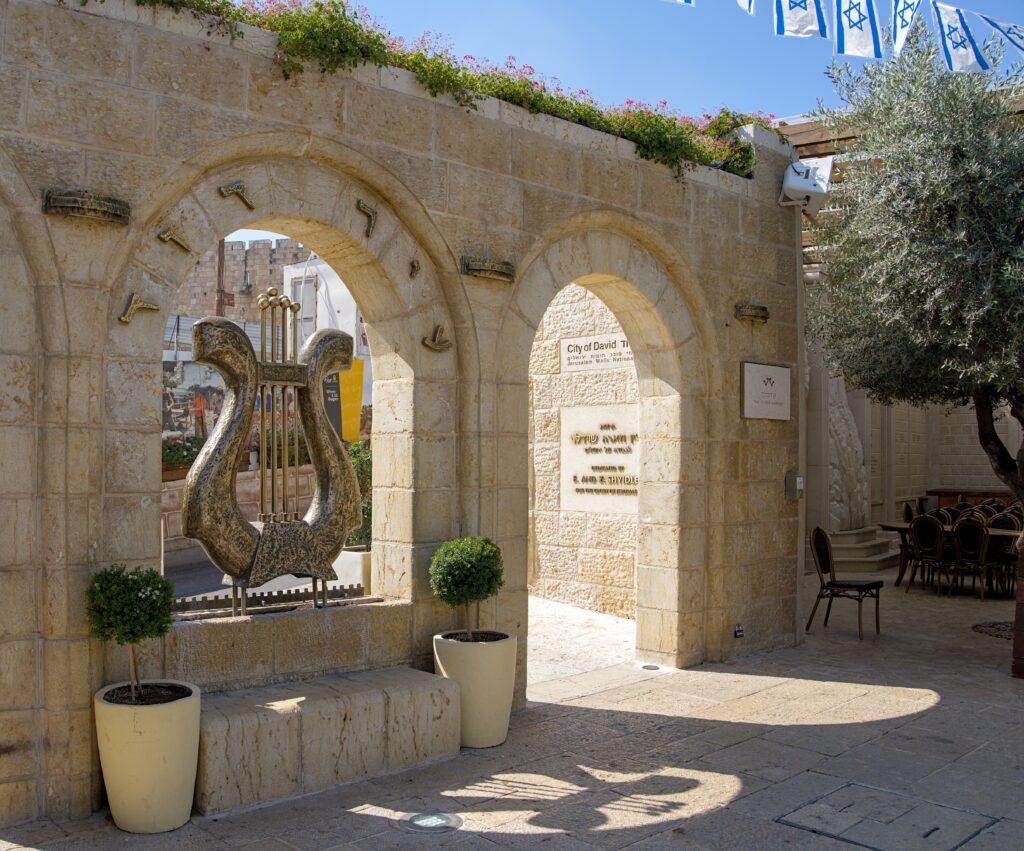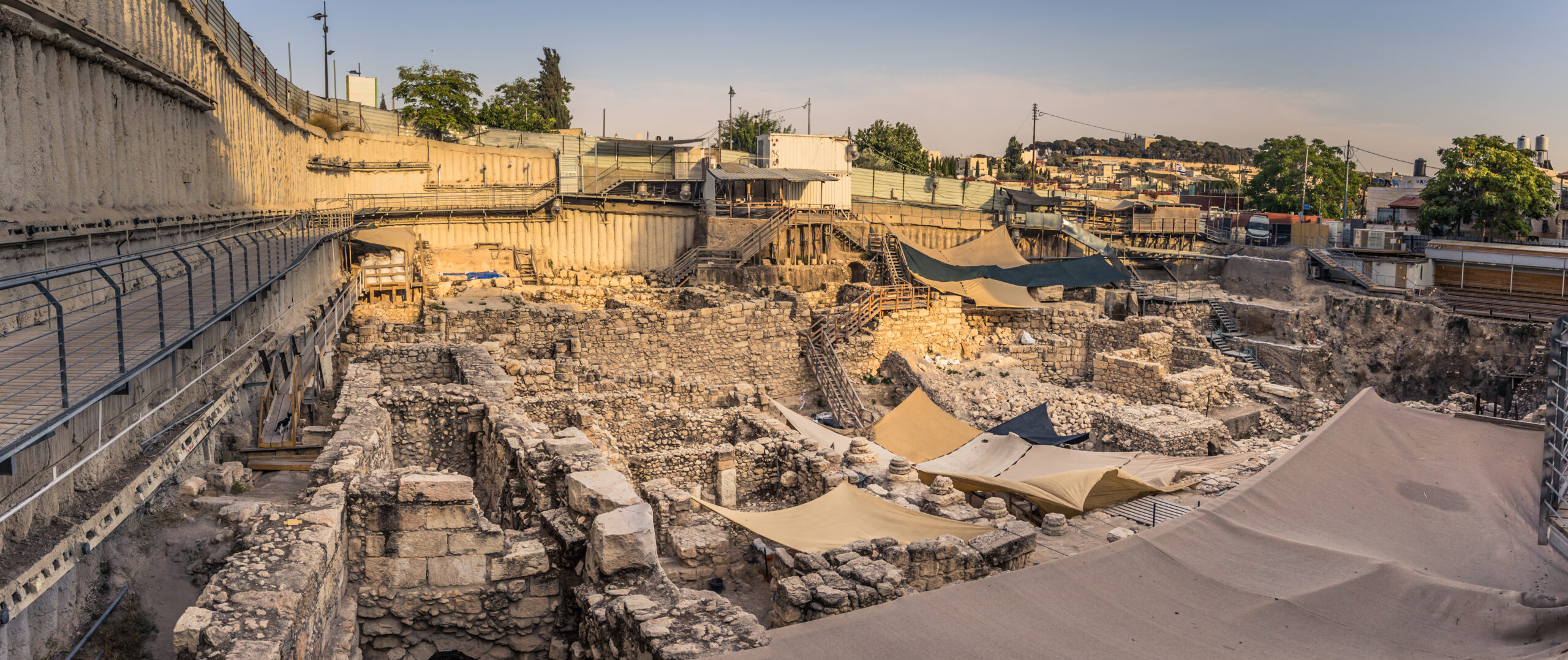Israeli researchers have achieved a remarkable breakthrough in archaeology, utilizing cosmic rays to detect hidden chambers beneath Jerusalem without disturbing the ground—a development that showcases the country’s growing leadership in cutting-edge archaeological innovation.
Scientists at Tel Aviv University have shown that muon detectors—devices that track subatomic particles created when cosmic rays strike Earth’s atmosphere—can act like an “X-ray” for the planet, revealing underground voids and tunnels hidden for thousands of years. These muons, which carry an electrical charge similar to electrons or protons, continuously rain down from space, offering a natural tool for peering deep beneath the surface.
“Muons hit the ground at a constant, known rate,” explained Prof. Erez Etzion of Tel Aviv University’s School of Physics and Astronomy, who led the physics team. “Unlike electrons, which stop after only a few centimeters of soil, muons lose energy slowly and some penetrate deep into the Earth—some even reaching depths of up to 100 meters.”
The technology was successfully tested at the City of David archaeological site, located just outside Jerusalem’s Old City walls, specifically at Jeremiah’s Cistern. The results, published in the Journal of Applied Physics, could give archaeologists worldwide a powerful new tool to map subterranean spaces before they lift a single shovel.
“A major problem for archaeologists is discovering deep underground voids beneath rocks,” explained Prof. Oded Lipschits of Tel Aviv University’s Department of Archaeology and Ancient Near Eastern Cultures. “Above-ground structures are relatively easy to excavate, but we have no effective methods for conducting comprehensive surveys of subterranean spaces beneath the rock.”
Until now, discovering underground chambers has mainly been a matter of chance. An archaeologist might dig deep into bedrock and suddenly stumble upon an opening—the entrance to a hidden reservoir or storage chamber. But there was no way to know it existed beforehand.
“All archaeological sites are like Swiss cheese,” Lipschits said in an interview. “From the pyramids of Egypt to the Maya cities of South America, and of course here in Israel, ancient inhabitants carved out underground spaces for water systems, agricultural storage, and more.”
First: cosmic muon detectors are awesome. This is at 2x speed, but a huge number of particles from space traverse our bodies ALL THE TIME (and they're perfectly safe because they don't leave pretty much any energy in us) [2/N] pic.twitter.com/9BvADQp9ZJ
— Caterina Doglioni (@CatDogLUofM) January 11, 2019
This problem is particularly acute in Israel, where vast areas contain a layer of hard limestone beneath which lies softer chalk. Over millennia, inhabitants who managed to pierce this upper layer could easily create chambers for storage, water installations, or living spaces—leaving a honeycomb of hidden cavities beneath ancient sites.
The principle is elegantly simple: empty cavities allow more muons to pass through than solid rock does. By placing detectors underground and measuring the muon flow, researchers can identify where voids exist.
Etzion compared the method to medical X-ray imaging. “You send an X-ray beam through a body and place a camera on the other side to image bones and joints, which block the beam more than fat or flesh,” he said. “Here, the muons are the X-ray beam, our detector is the camera, and the underground systems are the human body.”
While the concept of using muons to probe hidden spaces isn’t entirely new—archaeologists attempted to scan Egyptian pyramids with primitive muon detectors as early as the 1960s—the Israeli team’s innovation lies in making the technology practical for everyday archaeological work.
“The technology itself isn’t new,” Etzion acknowledged, “but our innovation is making detectors small, mobile, and practical for archaeological sites. This means we can map entire sites layer by layer, without disturbing them.”
Getting the equipment into position at the City of David site proved challenging. The research team had to rappel into underground caverns, using ropes and pulleys to bring in their scientific equipment.
“It was an extremely challenging task,” Etzion recalled. “In the lab, we are in a sterile environment; here, we rebuilt a detector in a few crazy days, under the ground where it’s dark and humid, far away from a clean laboratory with ideal conditions.”

The researchers didn’t rely solely on muon detection. They also employed high-resolution Light Detection and Ranging (LiDAR) scanning, which provides precise 3D maps of visible surfaces and accessible cavities.
The two technologies complement each other perfectly: LiDAR provides the “skeleton” of known structures—walls, floors, and tunnels that can be physically measured—while muon detectors reveal the hidden voids that cannot be seen or directly accessed. By combining both datasets, archaeologists can create comprehensive 3D models showing both known and unknown underground features.
At the City of David site, which preserves layers of Jerusalem’s past from the Iron Age (1200–586 BCE) through the Roman era and into the Early Islamic period, the detectors not only confirmed underground cavities already known to archaeologists but also revealed previously undiscovered ones.
“It was very interesting, a clear indication that the system works,” Lipschits said. “Now we can move forward and refine the technique.”
The development reflects Israel’s broader reputation as a leader in technological innovation. This same innovative spirit has increasingly been applied to archaeology, where Israeli researchers have been pioneering new approaches to understanding the past. The muon detection project exemplifies this trend, bringing together physicists, archaeologists, and even defense technology experts—co-authors on the published paper include researchers from the Israel Antiquities Authority and Rafael Advanced Defense Systems.
The team’s immediate goal is to create portable, affordable muon detectors and software that can be employed by excavations anywhere in the world.
“We’re already working on developing them,” Lipschits said. The team is also planning additional case studies at archaeological sites across Israel to refine their methods.
Their next major test will be at Tel Azekah, an ancient site first settled around 3500 BCE that remained significant throughout biblical times and continued to thrive during the Hellenistic, Roman, and Byzantine periods.
“We know there is a large water reservoir there, and we want to see what the cosmic ray detectors can reveal,” Lipschitz explained. “Afterwards, we will excavate the site and compare the findings.”
Beyond archaeology, the technology holds promise for other applications, including identifying underground cavities for defense and infrastructure purposes.
“This is a first milestone,” Lipschits said. “Our goal is to produce 3D images of subsurface spaces before excavation begins, combining physics, archaeology, and AI. This could save years of work, protect fragile sites, and allow us to discover ancient structures that would otherwise remain hidden.”




